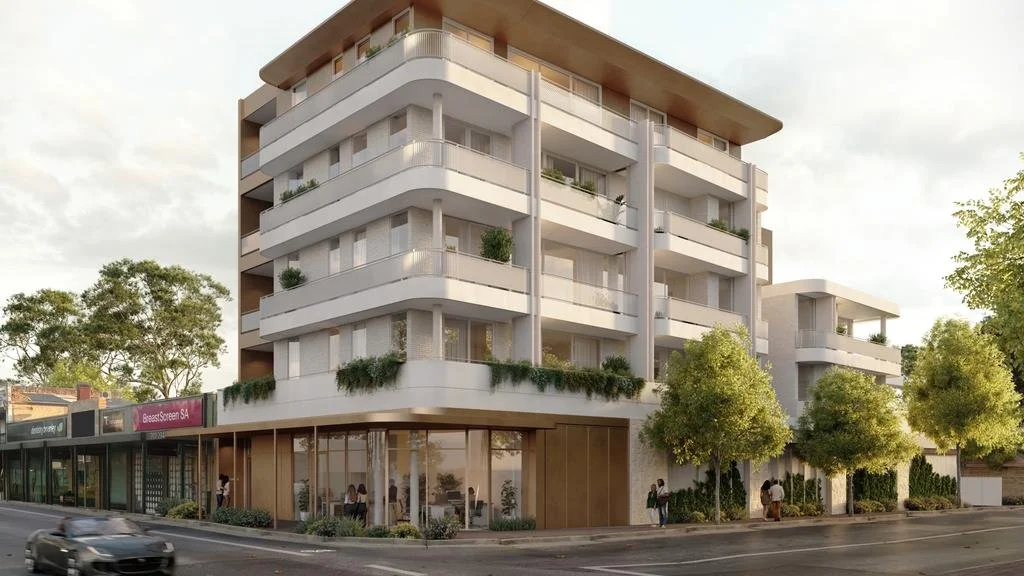The Esmond and the Future of Housing in South Australia: A Bold Step Toward Luxury, Livability, and Progress
In a time when housing conversations are dominated by affordability crises, rental shortages, and rising construction costs, it’s easy to overlook developments that focus on the other end of the spectrum—luxury living. But "The Esmond," a newly approved $18 million boutique apartment project on Unley Road in Hyde Park, Adelaide, challenges the notion that prestige projects are disconnected from public good. In fact, this elegant five-storey build might just be the template for how South Australia can blend sophistication with sensible urban planning. Its timely approval and upcoming construction could serve as a quiet revolution in how we think about density, lifestyle, and sustainability.
A Development with Depth
Located at 290 Unley Road, Hyde Park—an area synonymous with leafy prestige and quiet affluence—The Esmond will feature ten meticulously designed apartments. From a one-bedroom unit starting at $830,000 to a jaw-dropping three-bedroom penthouse nearing the $4 million mark, the building is unapologetically aimed at the upper-tier of the housing market. Yet, rather than see this as irrelevant or out of touch with the broader housing conversation, we should be asking how developments like this relieve pressure on the system and promote better outcomes for all.
Luxury apartments aren’t the enemy of housing equality. Quite the opposite: they are vital to it.
When higher-income buyers opt for high-end new developments, they leave behind established homes that can be reabsorbed into the middle-market. Think of it like a property ladder with more rungs—The Esmond adds more options at the top, which in turn keeps things moving at the bottom.
Urban Density Done Right
Height and density have always been sensitive issues in low-rise neighbourhoods like Unley. At 18.5 metres and five storeys, The Esmond will indeed "tower" over its immediate surrounds—but it’s essential to place this into perspective. The Government Architect supported its height, citing similar buildings nearby. More importantly, the building doesn’t seek to dominate the street—it complements it. The use of soft architectural lines, generous balconies, green walls, and landscaping connects the building to the charm and rhythm of Hyde Park’s streetscape rather than disrupts it.
This is how Adelaide should be thinking about density. Not just squeezing in more residents, but lifting the overall quality of life. Instead of generic towers, we need buildings that enrich neighbourhoods both visually and socially. The Esmond does this. Designed by SMFA Architects and brought to life by local developer Samaras, the project is about thoughtful integration.
Housing Crisis? Yes. Innovation Crisis? Also Yes.
South Australia’s housing crisis isn’t just about affordability—it’s about availability. More people want to live close to the city. More families want to downsize but don’t want to compromise on quality. More young professionals want to stay in South Australia instead of moving interstate or overseas. The Esmond meets this demand.
It's not the quantity of homes alone that matters, but the variety. We can’t solve the housing problem with one-bedroom CBD units alone. Nor can we do it solely with urban sprawl that costs taxpayers dearly in infrastructure. We need infill projects. We need architectural diversity. We need density with dignity.
The Esmond answers all three.
What This Means for the Broader Economy
Let’s be pragmatic—$18 million in construction is a direct investment into the local economy. Tradespeople, suppliers, project managers, interior designers, and many more will benefit. Long-term, the new residents will contribute to local retail, cafes, services, and the Unley Road commercial strip. These ten apartments may not seem like much, but in aggregate, smart luxury developments offer ongoing economic dividends.
The presence of a new penthouse that redefines Hyde Park’s skyline also places Adelaide on the map for inter-state and overseas investors. In a global property market that increasingly values lifestyle, culture, and sustainability, The Esmond speaks to Adelaide’s growing maturity as a city that can compete—not just on affordability—but on experience.
Architectural and Design Excellence
The visuals alone speak volumes. Curved living spaces, tactile materials, integrated lighting, and marble benchtops blend timeless design with contemporary functionality. The walk-in robes, designer kitchen finishes, and flowing indoor-outdoor transitions demonstrate that good design isn’t about extravagance—it’s about intentionality.
When buildings are designed with longevity in mind, they hold their value—and that’s crucial for property owners, developers, and the broader market. The Esmond doesn’t just house people. It houses pride.
Why We Should Cheer, Not Criticise
It’s easy to roll your eyes at a $4 million penthouse. But we must stop pitting social responsibility against aspiration. South Australia must build for everyone. The answer to inequality is not removing luxury—it’s ensuring there are meaningful, diverse pathways for all South Australians to find the home they need, at the stage of life they’re in.
The Esmond is not an indulgence—it’s an investment in what Adelaide can be.
And let’s not forget what’s coming underneath: a likely café on the ground floor, open to the public, enriching street life and offering one more reason to wander Unley Road.
Conclusion: Reframing Luxury as Progress
The Esmond isn’t just a boutique apartment building. It’s a signpost for where Adelaide is heading—smarter density, better design, and inclusive prosperity. It will never solve the housing crisis alone, but it plays a key role in the mosaic of solutions we need.
We need to stop thinking in binaries. This is not luxury or affordability. It’s luxury and affordability and sustainability and density. Adelaide has long been a city cautious of change, but The Esmond reminds us that bold, beautiful steps forward don’t have to be big to be meaningful.
So yes, let’s celebrate this. Let’s support developers who raise the bar. Let’s encourage councils and planning authorities to see the bigger picture.
And let’s remember that sometimes the answer to a housing crisis doesn’t just lie in more houses—but in better ones.

